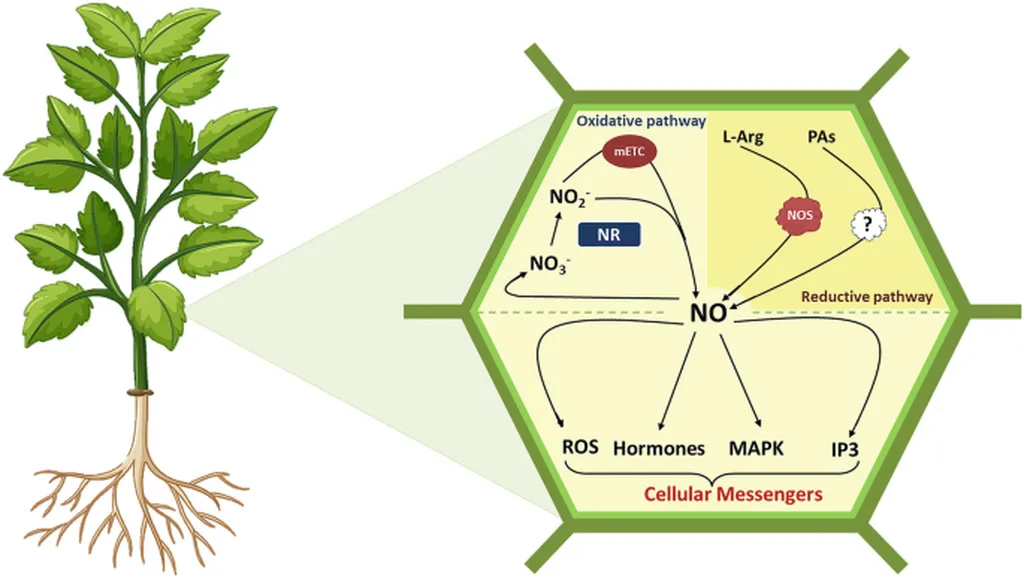In the intricate world of plant biology, a new review published in *Plant Stress* sheds light on the dual roles of reactive oxygen species (ROS) and reactive nitrogen species (RNS) as both damaging agents and crucial signaling molecules. Led by Muhammad Ali of Zhejiang A&F University, the research delves into how these species navigate the fine line between causing cellular harm and orchestrating plant defense mechanisms. This balance is pivotal for plant growth, development, and resilience against environmental stressors, offering promising avenues for agricultural innovation.
ROS and RNS are produced in organelles like chloroplasts, mitochondria, and peroxisomes, where their concentrations are meticulously regulated. “Their signaling roles are as complex as they are vital,” notes Ali. “Understanding how these species interact within plant systems can unlock new strategies for enhancing crop resilience.”
The review highlights the multifaceted roles of ROS and RNS in regulating plant responses to drought, salinity, pathogens, and herbivores. By exploring their signaling pathways and interactions, researchers can better comprehend how plants adapt to environmental cues. Advanced imaging techniques have provided unprecedented insights into the cellular dynamics of these species, emphasizing the need for a delicate balance between their production and scavenging to maintain optimal plant health.
For the agriculture sector, this research holds significant commercial potential. By harnessing the signaling functions of ROS and RNS, scientists can develop crops that are more resilient to environmental stresses, ultimately improving yields and sustainability. “The agricultural industry stands to benefit greatly from these findings,” says Ali. “By integrating this knowledge into breeding programs and biotechnological applications, we can create more robust and productive crops.”
The review also underscores the importance of understanding the biosynthesis, signaling, and interactions of ROS and RNS. This knowledge is crucial for unraveling their contributions to plant growth and resilience, paving the way for innovative solutions in plant defense and stress management.
As the agricultural industry faces increasing challenges from climate change and environmental stressors, the insights from this research could shape future developments in crop science. By leveraging the signaling functions of ROS and RNS, researchers and farmers alike can work towards more sustainable and productive agricultural practices. The review, published in *Plant Stress* and led by Muhammad Ali of the National Key Laboratory for Development and Utilization of Forest Food Resources at Zhejiang A&F University, marks a significant step forward in our understanding of plant defense mechanisms and their broader implications for agriculture.

